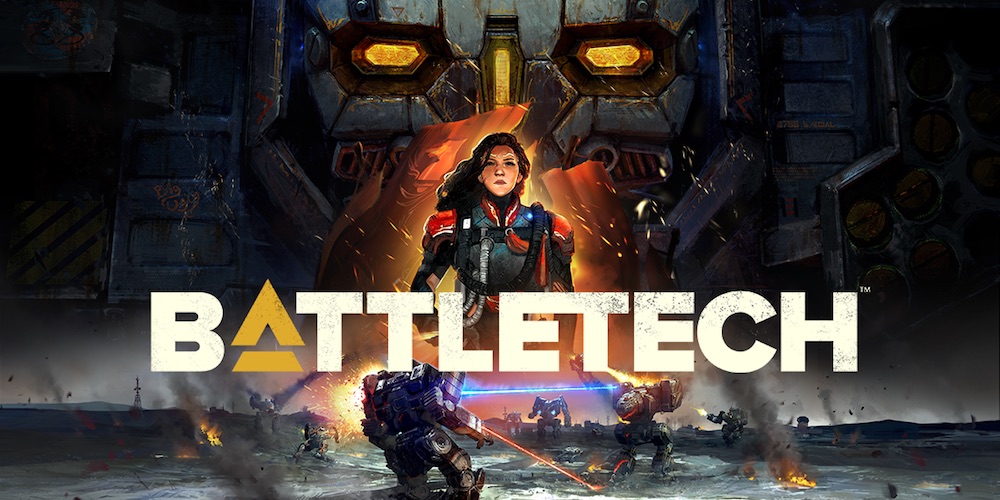
Everyone has their take on what a BattleTech game should be. Those of us who dream of being in the seat of a three-storey walking disaster zone believes the Mechwarrior series to be the perfect take on the IP. Of us who seek out a more strategic but realistic approach, Mechcommander was the stuff you’d kill your favourite aunt over. Despite these fantastic adaptations bringing the tabletop game to life, the turn-based roots of the game have never made it into the video gaming sphere. With the release of BattleTech, the 50-year old nerds who grew up with Timber Wolves and Vultures finally have a game that harkens back to what made the original game a beloved classic. The game is rough around the edges, but it’s a damn good adaptation of a beloved classic that’s a no-brainer for fans of giant stompy mechs.
For those unfamiliar with Western society’s greatest creation, BattleTech is all about big mechs. Initially a tabletop game, you would control “battlemechs” as part of a “lance,” move around a hex-based board and take turns shooting at your opponent’s lance. A key part of the game was designing your mechs, kitting them out with a loadout of missiles and lasers to fight in a particular way. You could spend hours thinking up the perfect combination of weaponry distributed amongst light and heavy mechs while meeting the most practical tonnage limitations. Now, you can do it on a screen instead of paper.
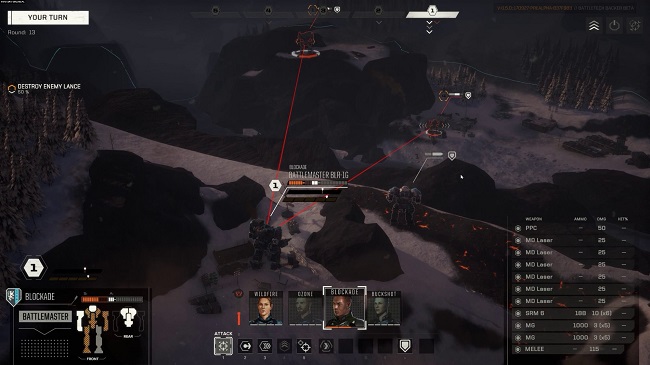
For the most part, BattleTech is a perfect rendition of the tabletop game. It’s hex-based, you can customise your mechs, and everything feels lifted from the tabletop version. The beautiful thing is that you don’t have to track damage on tiny dots anymore, so games run for ten minutes instead of ten hours. I went back and re-read the Classic BattleTech rules to see how closely they line up, and man, it is eerily familiar. If you liked the tabletop game, you can stop reading right now and buy BattleTech. If you don’t even know who FASA was, well, you’re going to have a hard time getting into the game.
The number one complaint I have is in the game’s strange dedication to obfuscating information. As you’re moving your mechs around, you’ll get information on what enemies you’ll be able to see, fire at and whether your weapons will be effective. The problem is that this information is presented a little strangely, and it can take a while to realise what the point of all these bars and chevrons are. Nothing gets explained in any detail either, so even though you’ll be told that evasion is good to have, good luck understanding what its effects are. There isn’t a ticker at the side to summarise what’s going on, and this can get frustrating when the RNG PPC’s you in the face.
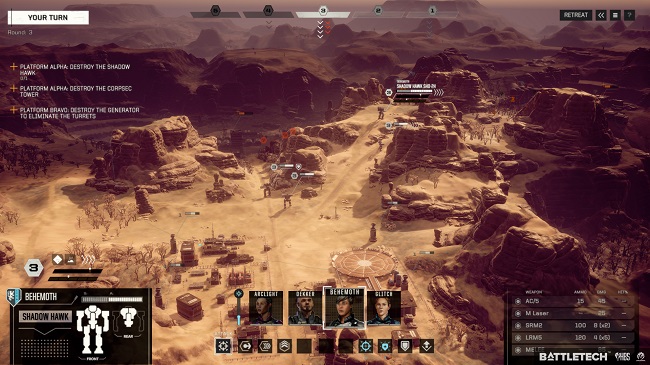
Perhaps it’s a problem with the tabletop game more than its adaptations, but the RNG can be infuriating. In the good ol’ days, you’d roll a couple of D6s to determine hit locations and critical effects. There’s this weird feeling when you roll dice that you’re somehow in control of the randomness, possibly because you can see the cause and effect of the roll. In a video game, you don’t have that sense of control or ownership, and BattleTech fails to make the RNG transparent to help understand what’s going on a little better. I’d prefer to be told that the other guy rolled well than nothing, and a ticker might help with the sluggish pace of the game as well.
You don’t have to fill out dots on a sheet anymore, but you do have to sit and wait as mechs move across the battlefield. It’s not a dealbreaker if you enjoy the game enough, but you can’t speed up or skip animations that draw the game out. This problem is especially unfortunate in singleplayer, as you have to maintain your mechs through several smaller battles and move between them. If one of your mechs loses a leg and has to limp from one fight to the next, you may as well go slow cook a pot roast. Still, the gameplay is satisfying enough that you probably won’t even care.
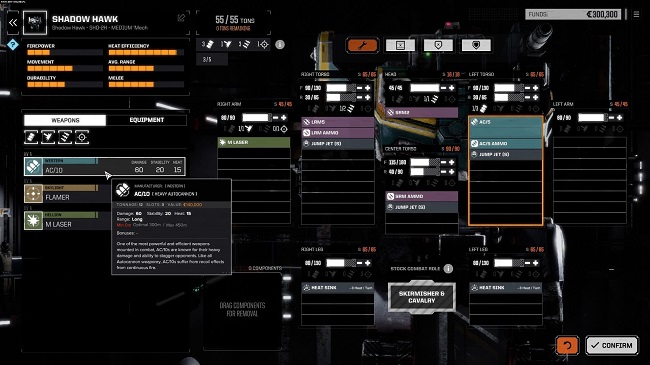
Even though battles can feel drawn out by the animations, most of your time will be spent weighing up your options. Every move you make feels hefty since your facing, loadout and circumstances will impact how you want to tackle the situation. You could run in and use your flamers on a mech ill-equipped to disperse heat, or you could run into cover, gain some evasion and apply some laser surgery to your enemy’s rear. Your pilots can also utilise special abilities to turn the tide of battle, including the ability to target specific components on a mech or stand their ground like a Texan at an NRA meeting. It’s a system with a nefarious amount of depth to it, and the customisation doesn’t stop you from tackling the game your way.
Remember how I said a key part of the tabletop game was customising your lance? BattleTech nails this process on the head, more or less. You’re given a lot of stock loadout mechs of every chassis, but you can still take one of those stock mechs and fit it out your way. This freedom to make your lances has been a staple of BattleTech (the IP) from its inception, so it’s great to see BattleTech (the game) stay true to form. The problem is that the UI for customisation is a bit like getting a straight answer from your university lecturer. You have to copy a stock design to make a new one, and you can’t make small changes before entering a battle. It’s annoying, but it doesn’t make the game unplayable, a bit like the campaign.
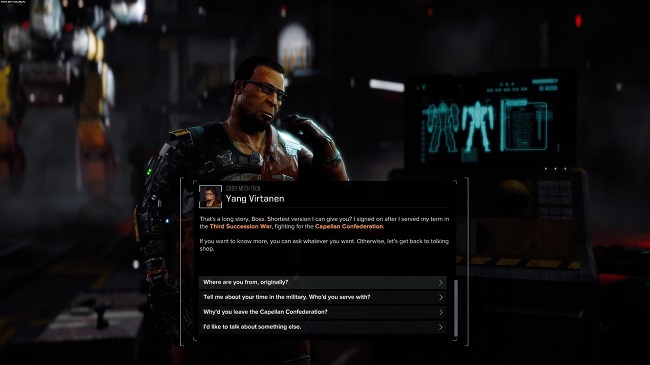
I’ve got mixed feelings about the campaign of BattleTech. On the one hand, the idea to make it function like a simplified X-COM management system was an excellent choice. I love the feeling of consequence that each battle has, and there’s a strong incentive to minimise risk in battles. Negotiating contracts is also a great way of tailoring the rewards to what you want, so while missions can get repetitive, you can go for money over parts or vice versa. It’s a functional campaign system, but it’s got a few twitch-inducing problems.
My issues with the campaign range from minor to utterly baffling. The writing is far from good; in fact, one could say it’s borderline unbearable. It’s dull, cliché and poorly written, but you don’t have to care about it to play the game. Meanwhile, strange design decisions, like being able to get an immediately constructed and kitted out free mech from partial mech parts, seem completely insane. I don’t think it ruins the campaign, though. It’s just got a few quirks that don’t feel right, much like how the game feels to play in general.

Without trying to vilify it, BattleTech feels like a Kickstarter game. I haven’t experienced any crashes yet, but the game has the occasional hangup or odd hiccup that’ll make you cock your head with a disconcerted, “huh”. The quality feels on point most of the time, but it’s those moments that make you question just how stable the game is that detract from the overall experience. When they happen every time you end your turn, it starts to get annoying, but it’s not game-breaking by any stretch.

For fans of the BattleTech IP, this game is a no-brainer. For everyone else, it’s still worth a go but not the best game out there. While the core gameplay is fun enough, the difficulty of entry can be off-putting until you wrap your head around everything. Thankfully, the freedom of customisation that has kept so many BattleTech fans loyal to the series is on full show. Though its execution leaves much to be desired, the game is a solid entry in the BattleTech video game line-up that’ll satiate your need for another Mechwarrior game for a while yet.











